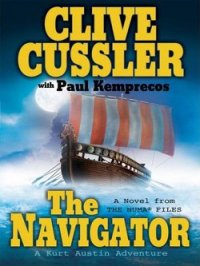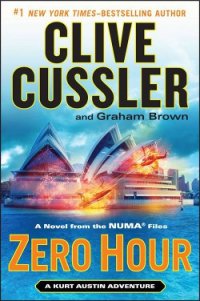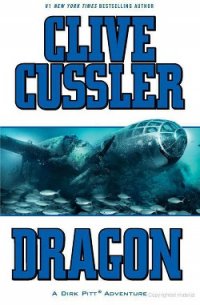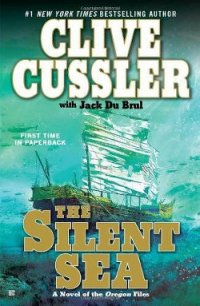White Death - Cussler Clive (библиотека книг бесплатно без регистрации .TXT) 📗
"When did you last hear from them?"
"About two hours ago. It was essentially the same message, only
the tapping has become much fainter. Toward the end, they tapped out the same word over and over." "What was it?"
Desperate.
Austin broke the grim silence that followed. "Did you get any other equipment down to the ship?"
"The Faroese Coast Guard called the NATO base on Stremoy. They contacted the NATO submarine rescue network minutes after the cruiser went down. Those ships you see out there are mostly from Scandinavian countries. We've been acting as the interim mother ship. A Swedish vessel should arrive soon with a rescue ve- hicle, but like the others, it's useless in this situation. It's set up to res- cue men through a submarine rescue hatch. We've been able to pinpoint the cruiser's location two-hundred-sixty feet down, but be- yond that, for all our technical ability, we're only spectators at a dis- aster in the making."
"Not necessarily," Austin said.
"Then you think you can help?" Becker said with pleading eyes.
"Maybe," Austin said. "We can say better after we see what we're up against."
Becker apologized for his earlier abruptness. "Sorry I flew off the handle. We're grateful for your offer to help. I owe a special debt to Captain Petersen. After we were hit and there was no doubt the cruiser would sink within minutes, he made sure I had a place in a lifeboat. When he learned others were still below, he rushed off to help them and must have been trapped when the ship sank."
"He's a brave man. All the more reason for saving him and his crew," Austin said. "Do you have any idea of the ship's position on the bottom?"
"Yes, of course. Come with me," the captain said. He led the way
to an electronics lab off the main deck. The room was equipped with computer monitors used for remote sensing projects. "This is a high- resolution sonar picture of the LeifErifyson," he said, indicating the image on a large monitor. "As you can see, she is lying at a slight angle on an inclined slope. The crews' quarters are here, one deck below the mess area, a short distance back from the bow. Obviously, air was trapped here." He circled a section of hull with the cursor. "It's a miracle they're still alive."
"It's a miracle they may wish never happened," Becker observed glumly.
"Tell us about the compartment."
"It's quite large. There are bunks for two dozen crewmen. It's reached by a single companionway through the mess hall. There is also an emergency hatch."
"We'll need specific details about the bunkroom, particularly the location of pipes, conduits and structural supports."
The captain handed over a file. "The navy department faxed this material to us in anticipation of the rescue attempt. I think you'll find everything you need. If not, we can get it to you quickly."
Austin and Zavala studied the ship's schematic layouts, then went back to the sonar image. "There's only so much we can learn from pictures," Austin said finally. "Maybe it's time I went for a swim."
"Good thing you brought your swimsuit," Zavala said.
"It's the new Michelin model. Guaranteed to wow the ladies."
Becker and the captain wondered if they had stumbled into the company of madmen. They exchanged puzzled glances, then hurried to keep up with the NUMA men. While Zavala sketched out their strategy for Captain Larsen and Becker, Austin supervised the four strapping crewmen as they moved the crate until it was under a boom. They unwound cable from the crane, then Austin ran it into the big box and gave the signal to start the hoist.
The bright-yellow figure that rose from the crate was nearly seven feet tall and looked like a robot in a fifties sci-fi film. The cast alu- minum arms and legs did indeed bulge like those of the Michelin Man, and the helmet resembled an oversized fishbowl. The arms ended in pincers like those of an insect. Four small fans protected by circular housings projected from the elbows and the back of the arms.
Austin rapped his knuckles against the unit pack attached to the figure's back. "This is the latest in Hardsuit technology. This model can operate at depths of two thousand feet for up to six hours, so I'll have plenty of leeway. Mind if I borrow a short ladder? I'll need an experienced boat crew in the water, too."
The captain dispatched his first mate to carry out the requests. Austin stripped off his windbreaker, pulled a heavy wool sweater over his turtleneck jersey, and yanked a black navy watch cap down over his ears. The suit broke at the waist into two sections. Austin climbed the ladder and eased his body into the bottom pod. Then the top section was attached, the lifting line attached, and the boom slowly lifted him off the deck.
Using the suit's radio, which was the same frequency as the ship's handsets, he called a halt when he was a few feet above the deck. He moved his arms and legs, aided by sixteen hydraulically compen- sated rotary joints. Then he tried out the manually operated manip- ulators at the end of each hand pod. Finally, he tried the foot-pad controls and listened to the whirr of the vertical and horizontal thrusters.
"All systems go," Austin said.
The atmospheric diving suit, or ADS, had been developed to pro- tect divers from intense ocean pressures while allowing them to carry out tasks of relative delicacy. Despite its humanoid shape, the Hard- suit was considered a vehicle and the diver referred to as its pilot.
With Zavala supervising the operation, the boom pivoted over the water. Austin swung back and forth like a yo-yo at the end of its swing. Seeing that the launch crew had its boat in the water, he said, "Lower away."
The cable paid out and Austin dropped into the heaving swells. Green froth surged over his helmet. The boat crew detached the cable fastening, and Austin sank like a stone for several fathoms, until he adjusted the suit to neutral buoyancy. Then he played with the thrusters, moving up, down, back and forward, then into a hover. He took a last look at the pale surface glimmering above him, switched on the lights on the chest section, mashed the vertical con- trol pad and began his descent.
5
UNAWARE OF THE events unfolding more than two hun- dred feet above his head, Captain Petersen lay in his bunk and stared into the darkness, wondering whether he would freeze to death or suffocate first from lack of oxygen. It was purely an intel- lectual exercise. He was beyond caring how the end came. He only hoped that it arrived soon.
The cold had drained most of his energy. Every labored breath of carbon dioxide that he and his crew exhaled made the air less able to sustain life. The captain was drifting off into the comatose state that comes when the will to live ebbs like the lowering tide. Even thoughts of his wife and children could not pull him back.
He longed to reach the numb stage that might cushion his aches and pains. His body still harbored enough life to sustain his misery. His tortured lungs launched into a coughing fit that triggered a throbbing in his left arm, broken when he'd been thrown against a bulkhead. It was a simple fracture, but it hurt like hell. The groans of his crewmen reminded Petersen that he was not alone in his dis- comfort.
As he had a dozen times already, the captain ran through the col- lision in his mind, and wondered if he could have avoided it. All had been going well. A dangerous confrontation had been avoided, and the Sea Sentinel was being escorted out to sea. Then without warn- ing, that crazy circus-painted ship had veered toward the cruiser's ex- posed side.




